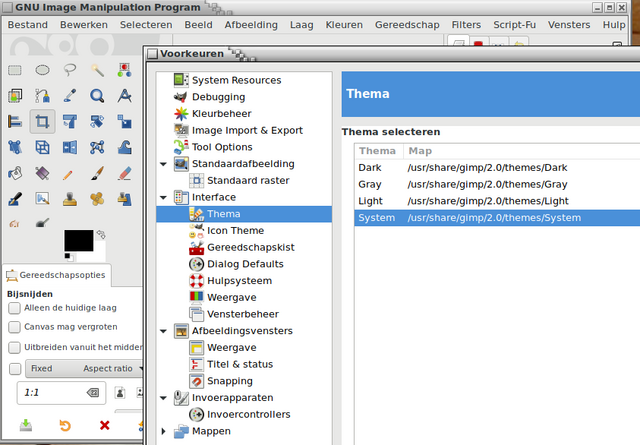

The more advanced layering, color conversions, spot toning, etc. On the commercial, every-photo-is-a-painting side, the GIMP might be a bit of a hindrance. I don't have a whole lot of experience with making multimedia presentations (audio slideshows, etc.) for Web and screen display in the GIMP/Linux, so I'll leave that alone for now. Making stuff screen-ready can easily be accomplished in the GIMP as well. The EXIF/XMP/IPTC stuff hurts bad (please, please, please, please FIX THIS), but the actual post went fine. In fact, for funzies, I just did a complete start-to-finish editorial shoot post in GIMP 2.4. The level of editing (painting) done to editorial photos is minimal by standard ethical practice and so really the tool need only be able to crop, resample, dust spot and adjust the exposure. Pre-press does the CYMK conversion and Web crop, usually. SRGB colorspace and 8 bits-per-pixel are more than enough. Files are then compressed to clock in at betweek 650kb-900kb. There is not a single application I can think of where someone working as a photojournalist would ever need more than what the GIMP offers.įile submission standard for newsprint is still 10 inches on the long axis 200 ppi. Sure, CS3 is still my editor of choice, but the GIMP is moving ever-closer to being a viable option.
#Spot color separation with gimp professional
I am a professional commercial photographer and editorial photojournalist. )Īctually, that's not necessarily the case. And I certainly agree that Ol' Gimpo needs at least 16bpc, but preferable 32bpc, workflow. So yes, I know very *very* well what the advantages are. Oh, and I'm a graphics professional - I work with 32bpc imagery all the time as sometimes that's what you need to run film footage through extensive colorgrading processes without incurring losses. In short, GP's parent poster acts a bit like an audiophile, claiming that every non-goldplated-connector is completely useless for listening to music the moment goldplated-connectors became available. That never stopped anybody from processing photos in the past, why should it now? Clearly it's nice if you -can- work in 16bit, but it's not going to stop hundreds of thousands of people from working with photographs for the sole reason that 16bit is unavailable. And it still doesn't on a ton of commands. Not too long ago, Photoshop didn't do 16bpc itself.

Unless you're shooting RAW (DNG, 16-bit TIFF, EXR or whatever your camera supports there), you're not going to get those 12 bits anyway. I think that what GP is getting at is that.


 0 kommentar(er)
0 kommentar(er)
